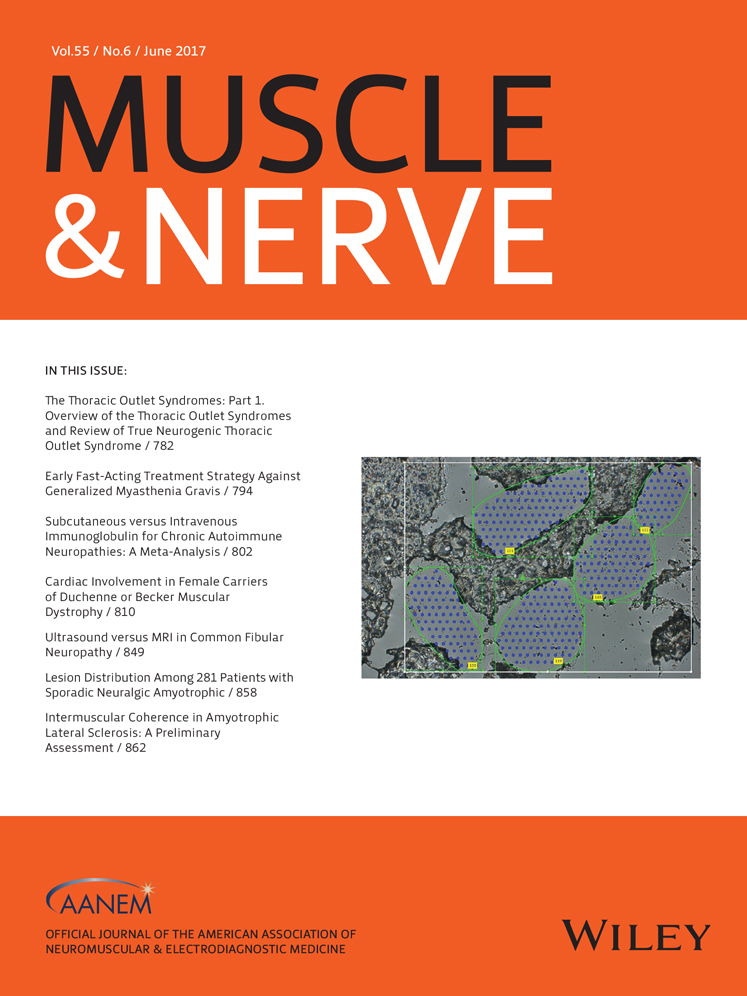Intermuscular coherence in amyotrophic lateral sclerosis: A preliminary assessment
This work was supported by grants by the ALS Association (ALSA grant 16-IIP-251) and the Institute for Transitional Medicine, University of Chicago (CTSA UL1 TR000430).
ABSTRACT
Introduction: Simple laboratory tests of upper motor neuron involvement in amyotrophic lateral sclerosis (ALS) are not available. Intermuscular coherence has been shown to distinguish patients with primary lateral sclerosis, a pure upper motor neuron disorder, from normal subjects, suggesting it could be useful for assessing ALS. We aimed to determine whether intermuscular coherence can distinguish ALS patients from normal subjects. Methods: We measured biceps brachii and brachioradialis activity using surface electromyography while subjects held the elbow at flexion and the forearm in semipronation. Intermuscular coherence was calculated at between 20 and 40 Hz in 15 ALS patients and 15 normal subjects. Results: On average, intermuscular coherence was 3.8-fold greater in normal subjects than in ALS patients (P < 0.01), and it distinguished ALS patients from normal subjects with a sensitivity of 87% and specificity of 87%. Conclusion: Intermuscular coherence measurement is a rapid, painless method that may detect upper motor neuron dysfunction in ALS. Muscle Nerve 55: 862–868, 2017




